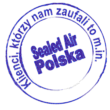Machine Safety Dictionary

Machine - assembly equipped with a propulsion mechanism other than human or animal muscle strength
Activation of protective equipment - when the protective equipment starts to operate when body movement is detected
Risk analysis - identification of events that may lead to the emergence of risk
Security - no risk state
Complete system halt - cessation of threatening motion after sensor activation
Access time - time determining access to the hazardous parts of the machine
Access frequency - number of access events to the protection zone per unit of time
Defect - the inability to perform the function of the object, with the exception of maintenance and planned repairs; Hazardous Defect - Any hazardous defect; a fault that does not change the safety status - the safety functions remain unchanged
Safety features:
- basic - disrupting them would increase the risk of injuries and the health condition of the machine operator
- unconditional - their purpose is to ensure safety
- conditional - are not directly related to the safety function
- indirect - disrupting them does not pose a direct threat, but weakens the level of security
Electro-sensitive protective equipment (EWO) - a set of components or devices working for self-protection, these are devices for sensing, controlling and monitoring as well as switching input signals
Safety-related elements of control systems - is responsible for input signals, generating output signals
Safety functions of control systems - they enable the achievement of the safe state of the machine, they are the result of input signals of control system elements
Machine hazardous function - function causing the hazard
Usage Information - security measures such as signs, symbols, charts, texts
Isolating and dissipating energy - isolation of the machine, i.e. its disconnection, closing of isolated units, energy dissipation or containment, checking the effectiveness of the procedure carried out
Category - division of control system elements in terms of defects and resistance
Position switch - it is influenced by the moving part of the machine
Reliability - the ability of the machine to operate reliably, without failure in given conditions and time
Risk assessment - identification of economic, environmental and social factors about the risk
Safety distance - distance between the protection zone and the danger zone
Operator - a person responsible for the installation, use, maintenance and repair of machines
Cover - a part of the machine providing protection, for example door, housing, cover; permanent guard - permanently connected with the place of its installation; movable guard - can be opened; adjustable guard - fixed or movable, with adjustable position; locking guard - equipped with locking elements, for example, bolt systems; control guard - equipped with locking elements to prevent operation when the guard is not closed
Machine design - construction, transport, use, decommissioning with the development of instructions for the phases of the "life" of the machine
Susceptibility to repair and maintenance - adapting the device to restore the condition necessary for safe operation
Reasonably foreseeable misuse - use of the machine in conditions not recommended for this
Redundancy - using another machine, part or system after a failure to ensure continuity of work
Reset - restoration of safety functions
Risk - the likelihood of the damage occurring and its severity; tolerated risk - accepted in the given circumstances
Self-supervision - automatic supervision activating safety measures in the event of limitation of the ability of a part to perform its function
Danger zone - a space where a person is exposed to injuries
Emergency situation - a situation in which a person is exposed to threats
Pity - damage, physical trauma to health, property, environmental degradation
Security measures - designed to reduce risk and achieve tolerated risk
Protective measures - used to protect persons from dangers which cannot be completely eliminated
Startup of the machine - commencement of operation of the machine or its parts; unexpected start - caused by damage, restoration of power supply, operation of the control element at an inappropriate moment, action of the machine, e.g. gravity, auto-ignition of the engine
Locking device - prevents the operation of a machine element
Protective device - alone or with cover reduces the risk
Overrun monitoring device - transmits a signal that prevents the device from being switched on again
Automatic distance device - stops the machine or its elements when crossing the protection zone
Limiting device - prevents the device from exceeding the limit values
Mechanical restraining device - having a mechanical barrier to prevent risky movements
Locking device - locks the machine guard
Supported control device - runs until the control element is turned on
Two-hand control devices - requires two hands to protect the operator
Step control devices - they allow you to work only in a given part of the room
Devices that restrict access - have physical obstacles to the danger zone
Enabling control devices - when turned on manually, allows you to do the work
Damage - the machine is not able to perform the given function
Using the machine as intended - correct use of the machine
Danger - creates possible trauma
Suspension - suspension of one or more safety functions while the machine is running
Harmful event - occurs when the emergency becomes a damage
Detection Ability - sensitivity parameter which causes activation of the protective equipment

































